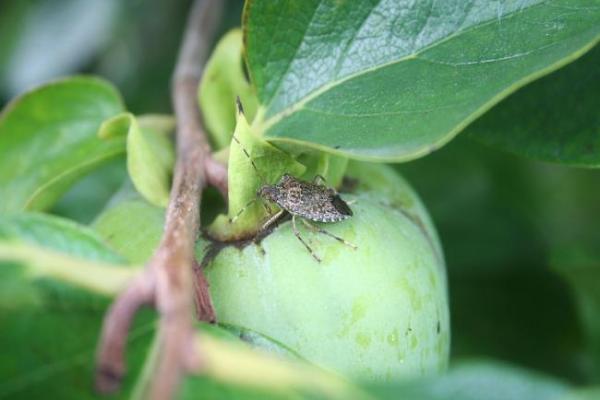Monitoring tools and innovative strategies to control the Brown Marmorated Stink Bug (Halyomorpha halys)

After very short time since its introduction, the asian brown marmorated stink bug (BMSB) has caused considerable damage to crops, with crop losses up to 80% among the orchards of the province of Modena in the summer of 2015. Given the high harmfulness and polyphagy, the concern is strong throughout the regional agriculture. This plan is characterized by a holistic approach that considers the applicative aspects of the biological cycle and agroecology of this invasive alien pest to provide to farmers and technicians effective and reliable tools for field monitoring and to develop sustainable and innovative management strategies, limiting to a minimum the use of chemical products.
The proposed activities are: implementation of surveys on the life cycle and field tests for the validation of a phenological model and support the coordination of IPM. Evaluation of the use of pheromone traps aggregation for monitoring. Agroecological investigation into the space time dynamic and the ecological preferences of H. Halys functional to the development ofeffective management strategies. Laboratory activities, semi-field and field on the definition of pest management strategies and preliminary verification of the potential of native predators. Effects of H. Halys on grape and the impact on wine quality.
The investigation on the life cycle will provide a support service for drawing up the integrated production bulletins and, together with the field survey, they will be used to validate and transfer in the regional forecasting system a phenological model system developed by American researchers. As for the field monitoring, the comparison betweendifferent types of traps and aggregation pheromones baits, will allow to identify the optimal and most effective combination for the definition of the economic damage /action thresholds.
Thanks to the agro-ecological investigations on spatiotemporal dynamics and ecological preferences (both in terms of plant species and of overwintering sites) information on the role of hedges and borders will be obtained, functional for the application in the field ofstrategies involving a reduction of the treated areas. Thanks to the activities related to the definition of control strategies (laboratory tests, semi-field and field trials) effective solutions will be detected, that are compatible with the IPM Guidelines, thus providing farmers innovative and alternative technical tools (eg. IPM-CPR, combined use of anti-hail / antiinsect nets) to protect crops from this emerging pest. The potential of native predators naturally present in the regional agro-ecosystems will also be elucidated, to verify to what extent they can play a role as natural enemies of BMSB. Finally, the activities aimed at verifying the effects on the wine sector will provide a support tool, with indications of damage/action thresholds, in order to prevent cases of commercial damage and /or image for the possible interference of BMSB on the production of grape and on wine quality.
| Titolo/Descrizione | Url | Tipologia |
|---|---|---|
|
Sito del progetto
|
Materiali utili
|
|
|
Halyomorpha halys, problematica in espansione - Informatore Agrario 44-2016
|
Materiali utili
|
|
|
Nuove opportunità di impiego delle reti multifunzionali - Informatore Agrario 15-2017
|
Materiali utili
|
|
|
Cimice asiatica su Pero: monitoraggio e difesa - Informatore Agrario 42-2017
|
Materiali utili
|
|
|
Infestazioni Halyomorpha halys su vite - Atti Giornate Fitopatologiche 2018
|
Materiali utili
|
|
|
Attrattività specie vegetali in siepi nei confronti di Halyomorpha halys - Atti Giornate Fitopatologiche 2018
|
Materiali utili
|
|
|
Efficacia insetticida piretroidi verso Halyomorpha halys - Atti Giornate Fitopatologiche 2018
|
Materiali utili
|
|
|
Poster Trappole Progetto Halys - Napoli 2/6-06-2018
|
Materiali utili
|
|
|
Cimice asiatica: buon controllo con le reti multifunzionali - Informatore Agrario 15-2019
|
Materiali utili
|
|
|
Come combattere la Cimice asiatica - Intervista Plantgest a Lara Maistrello del 26-07-19
|
Materiali utili
|
|
|
Approccio multidisciplinare per contenere la cimice asiatica - Informatore Agrario 13-2019
|
Materiali utili
|
|
|
Video - GOI Tecniche di monitoraggio e strategie innovative
|
Materiali utili
|
|
|
Video - Cimice asiatica e vino
|
Materiali utili
|

HALYS - Tecniche di monitoraggio e strategie innovative per il controllo della Cimice asiatica
Ad oggi non sono presenti predatori e parassitoidi indigeni in grado di controllare significativamente la cimice asiatica, anche se sono in corso diversi studi che offrono…